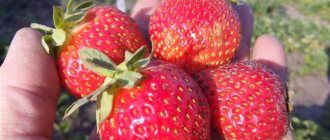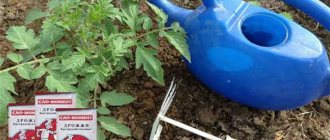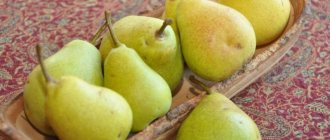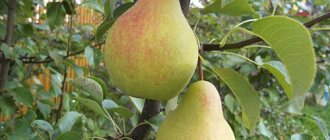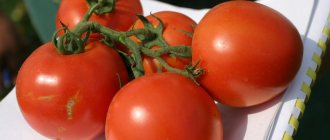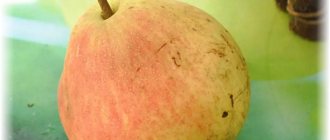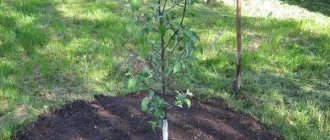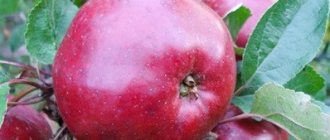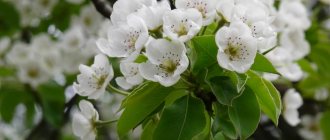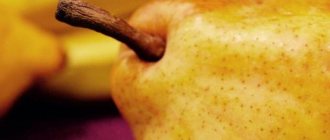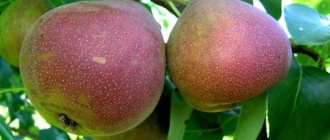Description of the winter-hardy and productive variety Chizhovskaya
The Chizhovskaya pear was bred at the Moscow Agricultural Academy (TSHA) in the 70s of the last century. Due to its outstanding winter hardiness, it was zoned in the 90s for the Middle Volga, Central and Northwestern regions. It quickly became one of the most popular varieties in the area.
The fruits of Chizhovskaya can be compared with southern varieties
The Chizhovskaya variety is late summer, ripens in the second half of August. The fruits are medium-sized (120–140 g), yellow-green, almost without blush, very tasty, and are not inferior in quality to southern pears.
The tree is medium-sized, on a regular rootstock it grows up to 3–4 meters in height, on a dwarf rootstock - up to 2 meters. There are no zoned dwarf rootstocks for pears in the central and northern regions! The common quince used for this in the south is not winter-hardy enough in central Russia. In the north, dwarf pear can be obtained by grafting onto chokeberry or shadberry. But this option is only suitable for an amateur garden due to the fragility of such grafting.
Video about Chizhovskaya
Advantages and disadvantages of pear
The advantages of Chizhovskaya include:
- High winter hardiness and resistance to adverse conditions.
- Very high self-fertility, does not require a pollinator.
- Early onset of fruiting (3–4 years).
- Regular fruiting without periodicity.
- High quality fruits and a fairly long shelf life.
- Scab resistance.
The only disadvantage of the variety is that the fruits of older trees become smaller.
Comparative characteristics of popular northern pear varieties - table
| Variety name | Taste of fruits | Fruit weight (in grams) | Ripening period | Winter hardiness |
| Chizhovskaya | very good | 120–140 | late summer | high |
| Lada | very good | 100–110 | early summer | high |
| Severyanka | average | 100–110 | early summer | high |
| Rogneda | good | 120–130 | autumn | high |
| Space | good | 90–110 | summer | high |
| Otradnenskaya | below the average | 120–130 | autumn | high |
| Somovskaya | good | 110–130 | average year | average |
Short description
Chizhovskaya is a variety of pears of the classic standard type with gray vertically inclined skeletal branches and slightly curved dark reddish-brown shoots, not too densely strewn with elongated, oval-elongated, medium-sized leaves.
The harvest on the tree ripens in the middle period, at the very end of summer or early autumn. The fruits grow in a heap, in groups of 4-5 pieces, are held firmly on the branches, without showing a tendency to shed. Pears retain their attractive presentation for a long time, and their transportability is average.
Landing Features
Pear is light-loving and needs protection from the cold northern wind. A good result will be if planted on the south side of the house, but not too close to its walls (at least 3-4 meters from the building). The tree grows poorly and dies quickly in lowlands with close groundwater. Prefers soils from slightly acidic to neutral.
When purchasing, be sure to ask the seller for information about the rootstock and the origin of the planting material. Carefully inspect the seedling. There should be no cracks, wrinkles or stains on the bark, damage or growths on the roots. Do not purchase dried out seedlings - they will not take root.
Buy seedlings only from reliable nurseries! At the market or from cars along the road they can sell a “pig in a poke.” Sometimes, instead of a pear, such would-be sellers slip an apple tree or rowan tree to buyers.
Pears are planted early in the spring - before the buds open (late April - early May). Planting holes are dug in the fall: depth - 0.5-1 m, diameter - 1-1.5 m. The distance between trees should be about 4-6 meters.
Pears are planted in pre-prepared holes.
Step by step process
- Place a stake in the hole to secure the seedling.
- Pour a mound of mixture of the soil removed from it with rotted organic matter (humus, compost) into the planting pit.
- Place the seedling in the hole so that the root collar is above ground level.
- Carefully fill the hole with soil.
- Water the planting generously (for 1 seedling - 2-3 buckets of water).
- Mulch the tree trunk circle with straw or peat.
How to plant a pear correctly - video
Self-fertility and pollinating varieties
A characteristic feature of Chizhovskaya is its very high self-fertility, which distinguishes this variety favorably from other pears. You can get good harvests even from a single tree in the garden, which is very convenient for owners of small plots. Chizhovskaya also pollinates well with Lada, Severyanka and Rogneda.
Harvesting
Pear Chizhovskaya is a mid-season variety. Fruit ripening begins in August. From one tree you can harvest approximately 50 kilograms of pears. The fruits on the trees are firmly fixed, are not damaged when falling, and do not lose their presentation. The fruits are easy to pick and require little effort. You need to start harvesting from the lower branches, and then from the upper ones. For this you will need a stepladder.
Important! You should not climb the tree, as this can damage the shoots.
The fruits need to be removed into baskets and sorted. Next, high-quality fruits are transferred to boxes, which must be transferred to storage. A cellar or basement is suitable for storage. The layers between the pears should be laid with paper. Storage temperature should be from 0 °C to +1 °C. Optimum humidity 85-90%. Under such conditions, the fruits can retain their appearance for about 2-4 months.
Tree care
Trimming
Pear pruning is divided into formative (to obtain a convenient crown shape, increase yields and limit the height of the tree) and sanitary (removing dry and damaged branches). The time for formative pruning is early spring (before buds open - March-April). Sanitary pruning is carried out throughout the season as needed.
Formative pruning of pears is carried out over several years.
Pear pruning scheme:
- Immediately after planting, trim the top of the seedling.
- In the spring of the second year, select several strong shoots to form a crown, located on different sides of the tree at some distance from each other. Shorten the tops of these selected shoots. Cut out weak and unnecessary shoots completely.
- Every year in the spring, repeat the event - shorten strong shoots and remove weak ones.
- When the tree reaches the desired size, cut out the vertically growing top shoot.
Spring pruning of pears - video
Watering
The pear forms a deep root system, but in dry summers it still needs watering. Water in a circle around the trunk. After the procedure, the soil is loosened and mulched with straw or sawdust.
Depending on the weather, from 2 to 6 waterings are required per season. Water consumption is from 2–3 to 5 buckets per square meter. If the autumn was dry, water-recharging irrigation is carried out in October.
Fertilizer
Humus is an ideal fertilizer for pears
To obtain a higher quality, environmentally friendly harvest, you should give preference to organic matter and, if possible, avoid the use of mineral fertilizers. This is quite easy to do in an amateur garden.
In early spring, when digging the soil, add from 2 to 6 buckets of humus under each pear tree, evenly distributing it over the entire area of the trunk circle. If there is a shortage of organic matter, you can add up to 20–40 g of ammonium nitrate per 1 m2. During autumn digging, up to 20–30 g of potassium sulfate and up to 40–60 g of superphosphate are added per 1 square meter.
Wintering
Chizhovskaya pear is very winter-hardy and does not require shelter for the winter. But the trunks of young trees need protection from winter attacks of mice and hares - they need to be wrapped in spruce branches or special covering material (spandbdom). In addition, you can cover the trunk and lower branches of the pear with whitewash - its taste and smell will prevent rodents from feasting on the bark.
Reviews
Bogdan
Sergeevka
Chizhovskaya is one of my favorite varieties. The pear is not capricious, frost-resistant and very productive. There are also no complaints about the quality of the fruit.
Lyudmila
Moore
Despite the fact that the variety is a late summer variety, the fruits are very well stored. If you create the right conditions, the pears will survive until the end of December without any problems.
Vladimir
Vyazma
The Chizhovskaya tree has grown small and this makes harvesting and caring for the plant much easier. In general, this variety is very hardy and unpretentious. It is enough to simply water the pear during periods of severe drought and carry out sanitary pruning in the spring.
Diseases and pests
Chizhovskaya pear is resistant to scab and does not require any measures directed against this disease. Occasionally it can be affected by fruit rot and sooty fungus. Of the pests, the most common are aphids, and less commonly, honey moths, codling moths and flower beetles. Chemical treatments in the amateur garden are extremely undesirable. It is better to use environmentally friendly preventive methods.
Fighting diseases and harmful insects - table
| Name | Description | Prevention | Control and treatment measures |
| Pear moth | Small gray butterflies. Caterpillars feed on seeds in pear fruits. |
| Inta-Vir (cypermethrin) 1 tablet per 10 liters of water - spraying at the beginning of bud break; again - after flowering. |
| Pear flower beetle | Small weevils. The larvae completely gnaw out the flower buds of the pear from the inside. | Shaking beetles from trees onto the litter (in cool, windless weather) and destroying them. | Organophosphorus insecticides (Aktellik, Fufanon) - spraying before buds begin to open. |
| Pear aphid | Very small sucking insects on leaves. |
| Inta-Vir (cypermethrin) 1 tablet per 10 liters of water - spraying at the beginning of bud break. |
| Pear sucker | In spring, small insects similar to aphids appear on the budding buds. |
| |
| Fruit rot of pear | Soft brown-brown spots appear on pears, quickly spreading over the entire fruit. |
| 1% Bordeaux mixture - spraying at the beginning of bud break. |
| Sooty fungus | Black coating on the leaves, similar to soot. | Fight against aphids and honeysuckers (the fungus develops only on their secretions). | Wash off plaque from leaves with water. |
Enemies of the crop in the photo
Pear fruit rot develops during rainy seasons
Sooty fungus on leaves develops when they are infested with aphids or copperheads.
An aphid infestation can destroy a young tree
A pear bud damaged by a flower beetle appears swollen
Pear moth butterfly lays eggs on fruits
The pear honeydew does not disdain other fruit trees.
History of selection and region of breeding
S.T. worked on the development of this pear at the Timiryazev Moscow Academy. Chizhov and S.P. Potapov. As parent forms they took the old Belgian variety Forest Beauty and pear Olga , bred at one time by the famous Far Eastern breeder A.M. Lukashov.
The following varieties also belong to his hand: Kupava, Perun, Lel, Rogneda and Sverdlovchanka.
The forest beauty has enriched the new variety with its positive qualities: pleasant taste and undemanding conditions for cultivation.
Interesting to know. Forest Beauty is a variety that was accidentally found in a forest near the Belgian town of Alosta (East Flanders) at the beginning of the 19th century.
From Olga Chizhovskaya inherited excellent winter hardiness and the ability to resist scab, and high fruitfulness .
The variety owes its name to one of the authors, Sergei Tikhonovich Chizhov, in whose honor the pear was named.
Despite this, consumers often vary the names of the Chizhovskaya pear variety, as soon as it is not called: Chizhevsky pear, Chizhevskaya.
But you should adhere to the correct name, given in honor of one of its authors - Sergei Tikhonovich Chizhov. At least out of respect for this breeder.
Collection and storage of fruits
Chizhovskaya is precocious, fruiting begins 3–4 years after grafting. The tree bears fruit annually. Up to 50 kg of fruit is harvested from one adult pear. This is a late summer variety, ripening in the second half of August, a week or two later than Lada.
The fruits are of average transportability. Stores well in the refrigerator - up to 2-4 months. Pears can be eaten fresh or used for home canning (preparing preserves, jams, compotes, juices).
Chizhovskaya makes tasty and aromatic jam
Summer pears are picked slightly unripe and put in the refrigerator, where they ripen in 1–2 weeks. Fruits that are overripe on the tree crack and are almost not stored.
Characteristic
According to official data from the State Register and available photos, the characteristics of the Chizhovskaya pear variety look like this:
- Type: medium-sized standard tree.
- Crown: medium dense, narrow-oval in shape when young, cone-shaped or pyramidal in adulthood and fruiting age.
- Height: on average about 1.8-2 m, maximum - no more than 2.5 m.
- Productivity: high - 40-60 kg per mature tree (over 4 years old).
- Frost resistance: excellent, up to -30 degrees.
- Fruiting: stable annually, starting from 3-4 years (sometimes even from 2 years) after grafting.
- Dates: summer-autumn pear.
- Purpose: universal.
- Fruit weight: 100-120 g (up to 140 g).
- Color: against the yellowish-greenish main background, small dark green subcutaneous dots are clearly visible, the integumentary blush is very weak, blurry pale pink.
- Skin: thin, dry, matte, even and smooth.
- Pulp: semi-oily structure, dense, juicy and melting in the mouth, light whitish-yellowish tints.
- Storage: 2-4 months.
- Size: medium or slightly below average, traditional elongated pear-shaped.
- Taste: good, balanced and refreshingly sweet and sour, rated 4.0-4.2 out of 5 by tasters.
- Aroma: subtle, delicate, not too pronounced.
- Self-fertility: the variety has high self-fertility qualities.
- Pollinator varieties: to increase productivity, Severyanka, Rogneda, and Lada are additionally planted.
- Resistance to diseases: high, especially to scab.
- Resistance to pests: average.
- For which regions is it suitable: Middle Volga, Volgo-Vyatka, Central, North-West.
- Lifespan: 30 years or more.
Pollination
The Chizhovskaya pear variety is considered completely self-fertile, but many gardeners recommend planting several pollinating varieties on the site to improve the quality of the harvest. Neighbors such as Rogneda, Severyanka and Lada are best suited for Chizhovskaya.
Photo gallery: the best pollinators for the Chizhovskaya pear variety
Severyanka is a summer pear variety with high winter hardiness and productivity.
The advantages of the Rogneda variety include attractiveness and good consumer qualities of fruits, high yield
The Lada variety is valued for its high, regular yield and excellent fruit quality.
How to harvest and store crops correctly
The fruits begin to ripen by mid-August. The harvest lasts until the beginning of September. The yield of marketable products at the stage of technical ripeness is very high - 90%. Chizhovskaya is characterized by weak fruit shedding, which cannot be affected by either strong winds or rainy weather.
It is recommended to remove the fruits from the tree along with the stalk. Picked pears are carefully placed in baskets or boxes.
From one mature tree that has reached the age of 10 years, you can collect up to 60 kg of fruit. In “lean years” the tree can bear up to 40 kg. A pear grown on a dwarf rootstock produces a smaller harvest - up to 30 kg per tree.
One mature tree can produce up to 60 kg of pears
The fruits of the Chizhovskaya pear have excellent keeping quality. They can be stored for up to 150 days at a temperature of +2°C and a humidity of 80%. In less favorable conditions, the terms are shortened to 100 days.
For long-term storage, strong fruits without defects or damage to the skin are selected.
In winter, pear jam will delight you with a sunny mood
Full of vitamins and microelements, the delicious fruit is best eaten fresh. But the Chizhovskaya pear is also ideal for canning, because it has a “golden” weight and size. In winter, you can please your household with compotes, preserves, jams and marmalade.
Comparison with other varieties
In addition to the main varieties, there are quite a lot of hybrids on the list of pears loved by gardeners. They are considered an improved version of mother trees, since, having absorbed all the positive qualities, they are protected by selection from many shortcomings.
Table: comparison with Lada and Somovskaya varieties
| Chizhovskaya | Lada | Somovskaya | |
| View | late summer | early summer | average year |
| Average weight, g | 110–140 | 100–120 | 110–130 |
| Color | yellow-green, sometimes with a diffuse pink blush | light yellow, with a blurred red blush | yellow-green, with a blurred red blush |
| Taste | sweet with slight sourness | sweet and sour | sweet and sour |
| Frost resistance | high | high | average |
| Disease susceptibility | low | average | low |
| Productivity | high | high | high |
| Transportability | high | low | average |
| Shelf life | 2–3 months | 2 months | 10–12 days |
| Application | fresh look, preparations | fresh look, preparations | blanks, drying |
Advantages and disadvantages
The Chizhovskaya pear, which has absorbed the best properties of its mother varieties, has many advantages, but it is not without its disadvantages.
Advantages:
- earlier and regular fruiting;
- high frost resistance;
- weak fruit shedding;
- excellent presentation, beautiful and even color of the fruit;
- delicious pears with a delicate aroma;
- resistance to diseases, including scab.
Flaws:
- as the tree matures, the fruits become smaller;
- low resistance to various pests.
